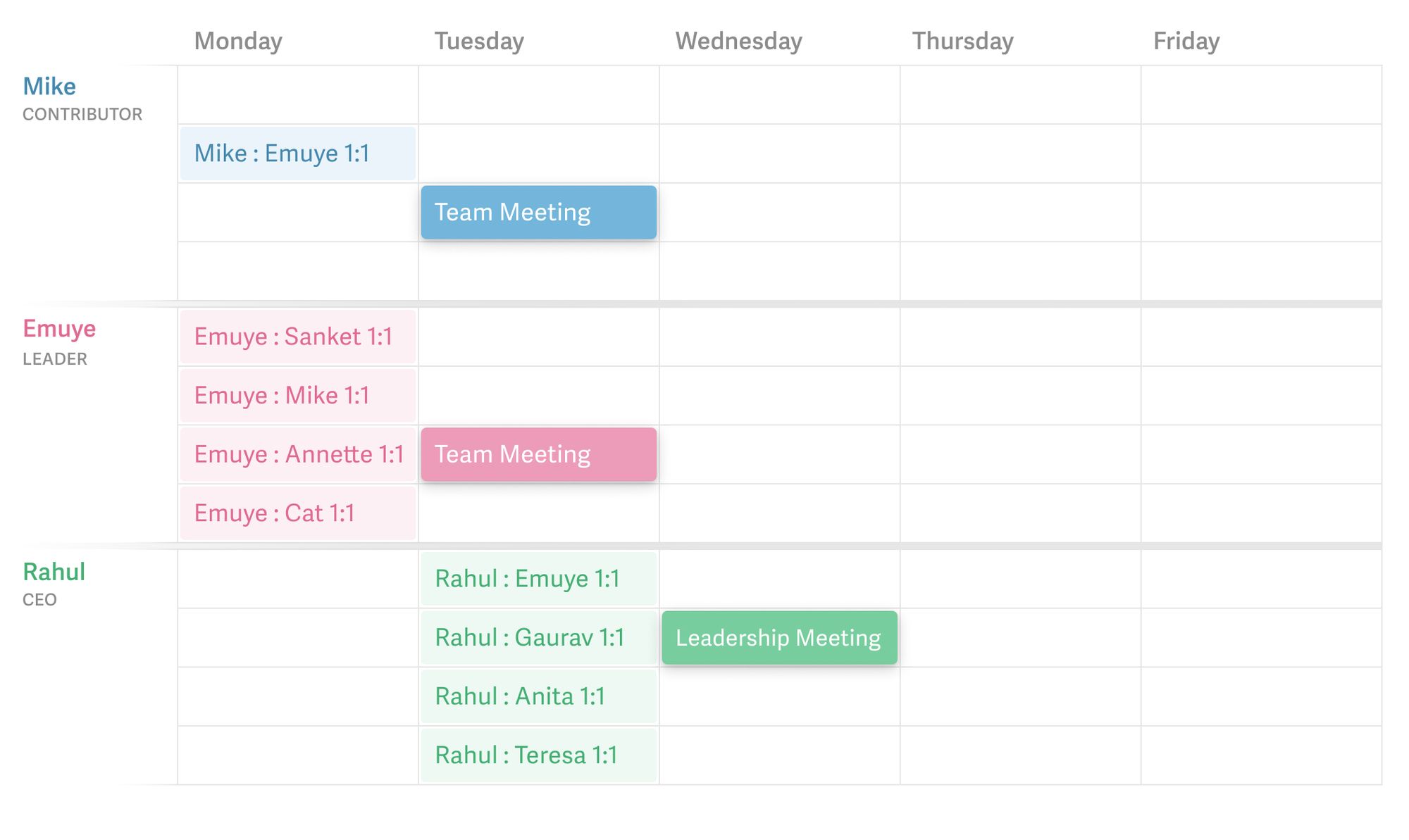
How does your calendar make you feel?
Is it a messy jigsaw of meetings, reminders, and urgent tasks? Or does your schedule give you space to breathe — and time to focus on your most important goals?
Chaotic schedules
Most people run very inefficient calendars.
In his classic post, Paul Graham diagnoses the friction between managers' schedules and makers' schedules:
- Managers' schedules: time slots of 1 hour or less allow frequent touch-points across the business, as well as networking at speculative meetings.
- Makers' schedules: units of half a day or more allow unbroken focus time to design, code, or write.
Many of us unintentionally combine these schedules. Team meetings happen when everyone is free. 1:1s are scattered throughout the week. Which leaves little time for deep work.
Brains have an impressive ability to change gears. But chaotic schedules reduce our productive time by a whopping 40%. No wonder we have days when "real work" doesn't start until 5 PM!
Switch cost and mixing cost
There are 2 major costs involved in switching tasks:
- Switch cost: your performance slow-down when changing between similar tasks.
- Mixing cost: your performance slow-down when changing between different types of tasks.
Changing from one task to another always incurs a switch cost. But you can reduce mixing costs by batching similar tasks. Here's how to apply this using staggered calendars.
Staggered calendars
You could batch your meetings on a randomly chosen day. That would reduce mixing costs and increase your focus time.
But benefits are greater with staggered calendars — for you and your entire team.

Careful scheduling increases focus time and improves information flow through the company. Here's how it works for a 2 or 3 layered organization:
- If you run a team, plan your team meetings for Wednesday and stack all your 1:1s on Tuesday. Share your Google Calendar to make scheduling easier.
Why you should do this: Batching your 1:1s on Tuesday leaves Monday, much of Wednesday, and all of Thursday and Friday free for deep work — the stuff that only you can do, and which requires your full concentration.
- If your reports run teams, ask them to lead team meetings on Tuesdays and stack their 1:1s on Mondays. If their reports also run teams, then stagger this arrangement by another day!
Why you should do this: Individual contributors discuss priorities and challenges with their managers 1:1 on Monday. Any roadblocks that can't be resolved 1:1 or asynchronously can be tackled by specific departments on Tuesday, or — if necessary — by leadership on Wednesday.
Staggered calendars free up focus time and facilitate the regular, predictable flow of information: from reports to managers to leadership.


